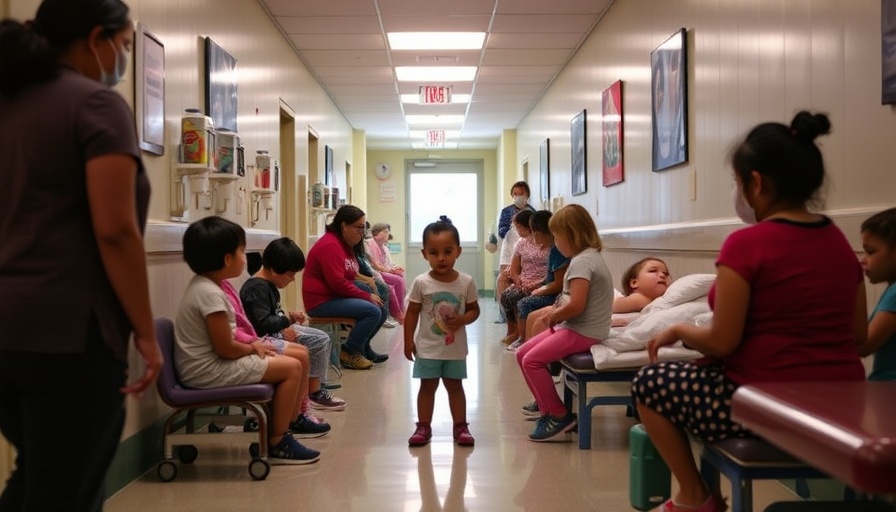
The Fall-Out from Federal Funding Cuts in Texas
The recent ending of federal COVID-era funding for Medicaid has sent shockwaves across Texas, particularly affecting children. After March 2023's “great unwinding” of Medicaid that stripped coverage from about 1.2 million Texas children, emergency department visits by uninsured children soared by an alarming 45%. This statistic, uncovered by researchers from Texas A&M University, highlights a significant health care crisis in the state.
An Unveiling Study on Emergency Visits
In a groundbreaking study published in Health Services Research, researchers examined the impact of this unwinding on emergency department visits, analyzing data on 7.6 million patients under 17 who sought care at 472 emergency departments across Texas from April 2021 to May 2024. The findings underscored a troubling trend: as states eliminated Medicaid coverage for many, the financial burden shifted disproportionately onto hospitals that must treat increasingly uninsured patients.
Understanding the Financial Dynamics of Health Care
According to Daniel Marthey, PhD, a health policy expert and lead author of the study, the source of a patient’s coverage—whether it be Medicare, Medicaid, private insurance, or uninsured—holds significant implications for hospitals. Commercial insurance typically pays higher than Medicare, while treating uninsured patients increases uncompensated care costs. Consequently, more uninsured visits typically lead to greater financial strain on healthcare providers, especially in an era when many already face budget constraints.
The Economics Behind Patient Coverage
The data revealed that Medicaid-insured visits dropped by 7.2 percentage points during the studied timeframe, translating to an 11.7% reduction from the baseline. Interestingly, the proportion of commercially insured patients increased by 12.5%. These dynamics encompass a critical shift, where safety net hospitals face unique challenges as they must navigate the financial picture reshaped by loss of Medicaid funding while accommodating an influx of uninsured patients.
Innovating Solutions in the Face of Adversity
As the Texas health landscape transforms, awareness and understanding of these changes will be vital for community leaders and health service providers. It is essential to come up with innovative solutions to address the realities of rising uninsured rates. Stakeholders might consider initiatives promoting health insurance enrollment drives, advocating for state funding to support hospitals facing uncompensated care costs, and emphasizing the necessity of preventive care to avoid costly emergency visits.
The Future of Health Care Access for Children
For families in Texas, the implications of these shifts extend beyond emergency department visits. Uninsured children often miss routine health care appointments, which can lead to overall worse health outcomes. As state officials grapple with budget implications from the increased burden of uninsured care, it’s crucial to develop strategies that prioritize health coverage for children, perhaps by investing in community outreach or expanding access to affordable insurance options.
Call to Action: Advocate for Health Equality
With the stakes at an all-time high, it's time for the community to act. Engaging with local health organizations and policymakers to support measures that enhance health insurance coverage for families can help mitigate these pressing issues. Together, we can voice the necessity for improved health care access and safeguard the well-being of Texas’s most vulnerable population—its children.
 Add Row
Add Row  Add
Add 



Write A Comment